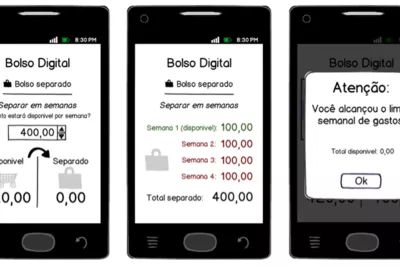The Role of Organized Retailers in Financial Inclusion
We have previously discussed on this blog how consumer goods retailers can be part of the financial inclusion landscape. Today, we start to expand on that theme, explaining briefly why retailers are an exciting opportunity for financial inclusion but how that opportunity is not present in every market and, where it is present, how certain types of retailers could place themselves better to serve low-income consumers.
Organized retail chains bring advantages similar to mobile network operators to the financial services space, with their widespread physical presence, underlying liquidity management systems and brand recognition. In Mexico, for instance, the total organized retail footprint is approximately nine times the branch footprint, in a market where banks have made sizeable investments in their retail networks. Further, Oxxo, the largest retailer has almost as many outlets as the total number of bank branches. In South Africa, the total number of organized retail outlets is roughly five times the total number of branches of the top five banks that dominate the retail banking market.
Where these retail chains exist, they may be well positioned to leverage their geographical footprint to offer financial services at a lower cost than traditional banks, and with more convenience to customers. The cost per transaction at bank agent networks can be as low as 50 percent of the cost per transaction at branches, especially at lower transaction volumes. These cost savings are made possible by leveraging an existing footprint, underlying liquidity management systems, and point-of-sale (and other) technologies; as well as an existing ability to roll out new products and services across large networks in a streamlined, efficient and relatively low-cost manner.
With strong brand recognition, and as trusted purveyors of various consumer goods to unbanked individuals, retailers can be well positioned to introduce people to formal financial services for the first time, in part by circumventing the intimidation factor which can play a role in keeping low income individuals out of bank branches.
However, organized retail chains are not well positioned to play a role in financial inclusion in every developing country. It is well understood, for example, that while retail is getting more organized and formalizing, branded organized retail chains are not prevalent across most of Sub-Saharan Africa. The formal organized retail presence is probably still less than 5% of the overall retail landscape; and where these chains exist, they mostly have a small footprint only in urban areas. The role of organized retail chains for financial inclusion is strongest in select Latin American markets (e.g. Brazil, Mexico, Peru and Colombia) and other countries like South Africa, where sizeable branded retail networks are emerging, and financial inclusion is still a significant challenge.
In our following post, we will look more in detail at a framework which builds on work done at McKinsey & Company to illustrate the various stages of organized retail and which will help us highlight the financial inclusion opportunity that exists in consolidated retail markets with high levels of unbanked customers.
- Michel Hanouch & Kabir Kumar-



Comments
It is about time someone
It is about time someone looked at this subject in earnest. In South Africa, the retail industry went “downstream” way before “financial inclusion” became a buzzword. In short, they entered markets where formal banks, initially, feared to tread. My guess is that one of the primary drivers for retailers to enter these markets was the rich repository of credit information which is available at SA credit bureaus. So risk on unsecured credit (sometimes moveable property was attached to the credit agreement, although usually worth very little at the time of foreclosure!)could largely be mitigated by bureau and/or business behaviourial scores based on consumer loan repayment patterns. Retailers in SA, though, are more likely to provide unsecured credit to purchase household items rather than strictly lending cash.
In Mexico and other nations
In Mexico and other nations with larger retail than banking footprints, it will be interesting to see how quickly mobile payment technology is adopted. With adoption rates of only 5%* in the U.S. (despite every major retailer, bank, wireless carrier and entrepreneur investing in the space), the industry will be slow to take hold. We might see true innovation in the category come from places such as Mexico where there is a real need for these types of services.
Source: http://www.pwc.com/us/en/banking-capital-markets/publications/evolution…
Add new comment